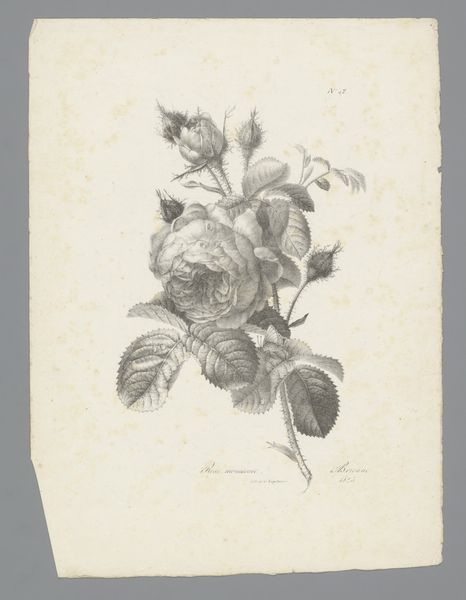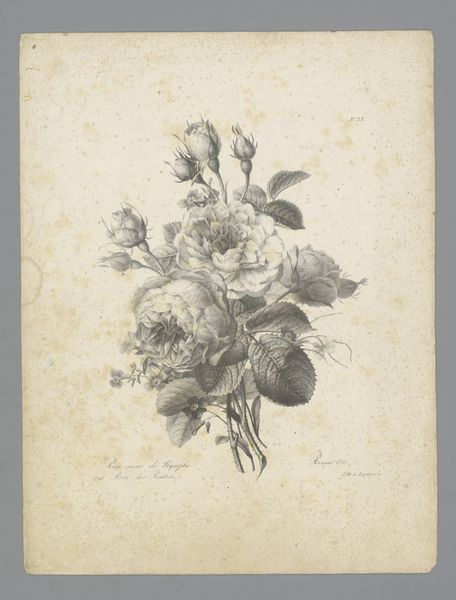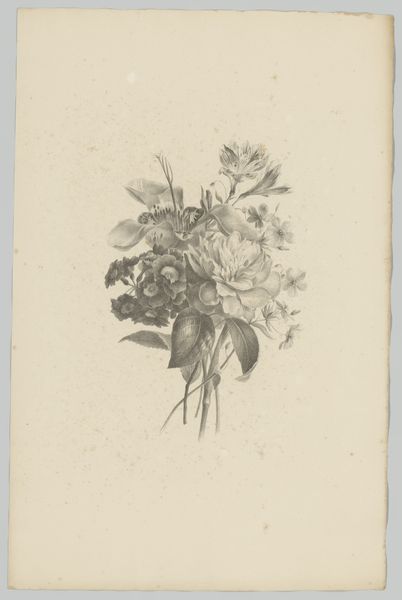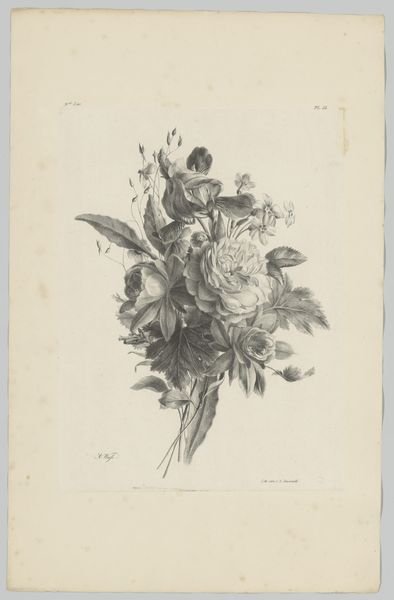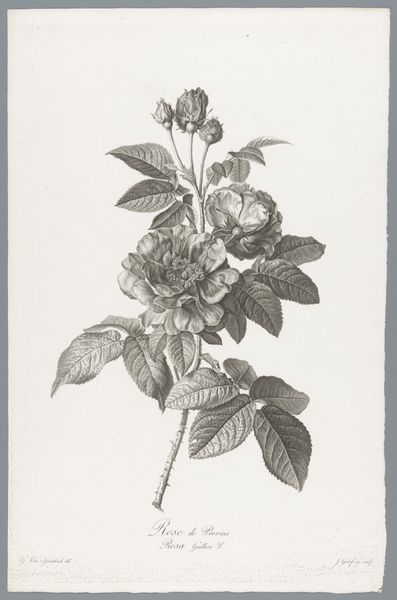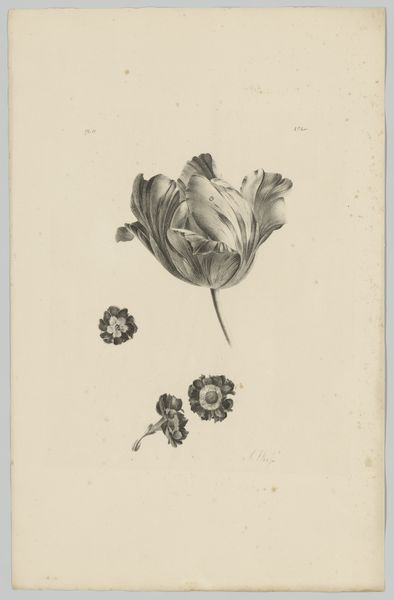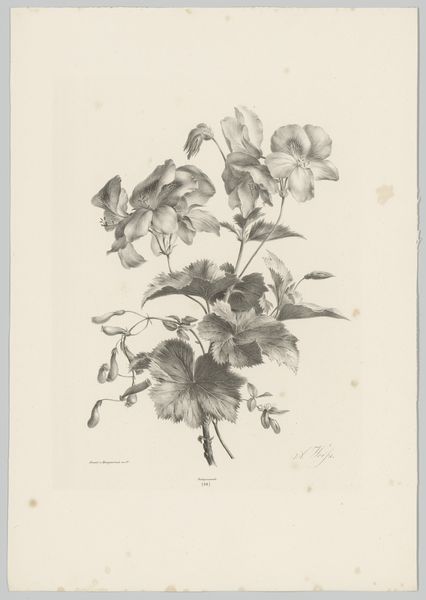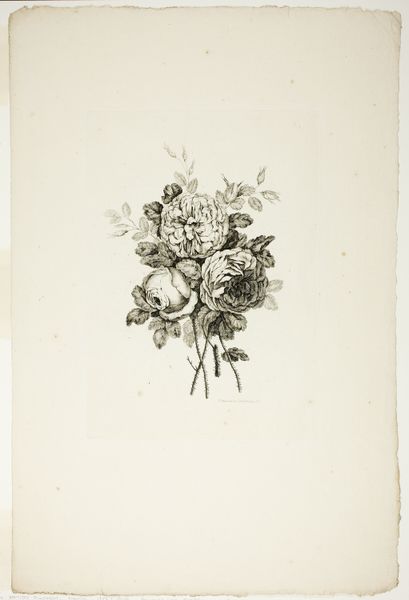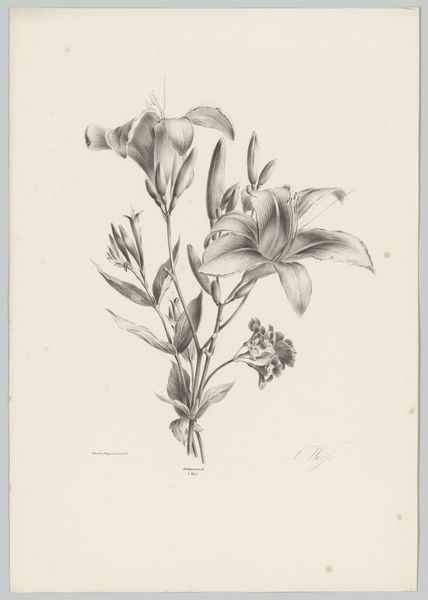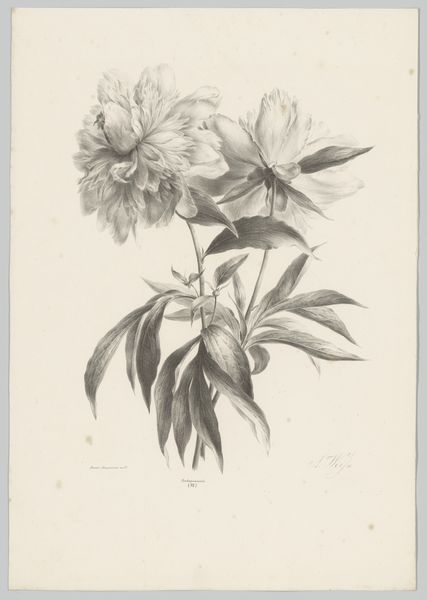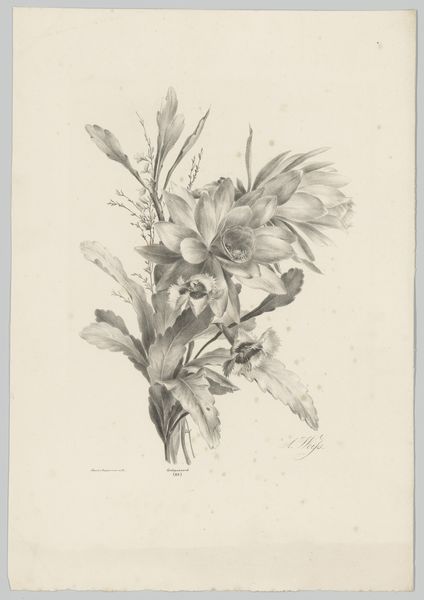
drawing, paper, pencil, graphite
#
drawing
#
landscape
#
paper
#
pencil
#
graphite
Dimensions: height 428 mm, width 295 mm
Copyright: Rijks Museum: Open Domain
Curator: Welcome! Before us we have "Rozen, anjers en fuchsia", or "Roses, Carnations, and Fuchsia" by Anton Weiss, completed in 1836. It's a lovely drawing, currently held in the Rijksmuseum's collection. Editor: My immediate impression is the delicate beauty, and perhaps also an undertone of melancholy. The greyscale shading gives the work a wistful atmosphere. Curator: Interesting. The artwork’s medium – graphite and pencil on paper – speaks to the 19th-century fascination with capturing nature with readily available materials. One could consider the labor involved in such a detailed botanical rendering. Weiss must have observed these flowers intently, tracing their delicate structures repeatedly on the page. Editor: Yes, and to view flowers merely as decorative belies their rich symbolism throughout art history. Roses and carnations both have long traditions of symbolizing love, purity, and even transience. Within a broader societal lens, these floral arrangements were popular in bourgeois culture. Think about the messages embedded within presenting and receiving such compositions during this time period. Curator: Indeed, we must also consider that the consumption of botanical illustrations like these was very popular and aligned with colonial ambitions during this time; a kind of aesthetic subjugation through cataloging and ordering nature, even the exotic blooms that are alluded to here. Editor: Precisely! And who has access to appreciating—or possessing—these images? It reflects not only an interest in the natural world, but also power dynamics regarding trade and exploration. How is this imagery, so seemingly gentle, linked to larger historical injustices? Curator: A challenging question and one worth sitting with when we think about artistic practices like drawing and their social frameworks. The production is deeply rooted in the economy, and it shaped aesthetics through that context. Editor: Agreed. As viewers, we must continually acknowledge the silent narratives woven into even the loveliest arrangements. By looking beyond the surface, we activate discussions regarding historical inequalities, class, and how certain groups’ experience is prioritized over others. Curator: Thank you for contextualizing what may have appeared as just a botanical landscape drawing. It makes you think about what "ordinary" practices uphold within an age. Editor: And hopefully encourages critical questioning, even of those works which seem like simply a peaceful scene of some flowers.
Comments
No comments
Be the first to comment and join the conversation on the ultimate creative platform.
